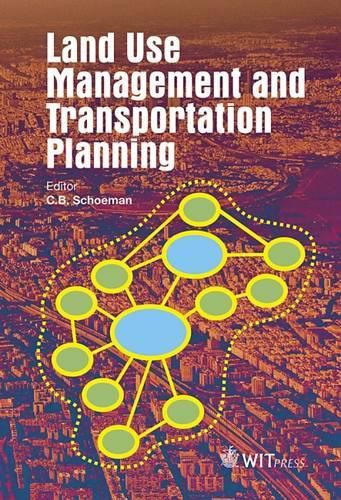Readings Newsletter
Become a Readings Member to make your shopping experience even easier.
Sign in or sign up for free!
You’re not far away from qualifying for FREE standard shipping within Australia
You’ve qualified for FREE standard shipping within Australia
The cart is loading…






This title is printed to order. This book may have been self-published. If so, we cannot guarantee the quality of the content. In the main most books will have gone through the editing process however some may not. We therefore suggest that you be aware of this before ordering this book. If in doubt check either the author or publisher’s details as we are unable to accept any returns unless they are faulty. Please contact us if you have any questions.
The interface between land use management and transportation planning represents probably the most important spatial impact in sustainable land use, mobility and transportation development. Prior to this book, only limited attempts have been made to integrate these topics as to enhance smart growth and sustainable development principles within spatial systems.The approach followed differs internationally and specifically between different planning and transportation authorities. The spatial impacts of land use and transportation serve as the main catalyst in urban form, development and its associated problems. These impacts represent severe consequences from a built and environmental development perspective. All of these are covered in the book and its supporting chapters.The focus of the book is the application of best practice principles in managing the interface between land use management and transportation planning. Internationally the practice is the promotion of more sustainable urban and rural forms supported by improved levels of accessibility through the application of smart growth and sustainability principles.The focus however remains to successfully optimise land use and transportation integration. The structuring used within each of the chapters provide the reader with the basic and applicable theory and practical knowledge to attain system wide integration and sustainability within the dynamics of spatial and transportation systems. The inclusion of specific theme related case studies endorses the relevancy of this book’s topic.
$9.00 standard shipping within Australia
FREE standard shipping within Australia for orders over $100.00
Express & International shipping calculated at checkout
This title is printed to order. This book may have been self-published. If so, we cannot guarantee the quality of the content. In the main most books will have gone through the editing process however some may not. We therefore suggest that you be aware of this before ordering this book. If in doubt check either the author or publisher’s details as we are unable to accept any returns unless they are faulty. Please contact us if you have any questions.
The interface between land use management and transportation planning represents probably the most important spatial impact in sustainable land use, mobility and transportation development. Prior to this book, only limited attempts have been made to integrate these topics as to enhance smart growth and sustainable development principles within spatial systems.The approach followed differs internationally and specifically between different planning and transportation authorities. The spatial impacts of land use and transportation serve as the main catalyst in urban form, development and its associated problems. These impacts represent severe consequences from a built and environmental development perspective. All of these are covered in the book and its supporting chapters.The focus of the book is the application of best practice principles in managing the interface between land use management and transportation planning. Internationally the practice is the promotion of more sustainable urban and rural forms supported by improved levels of accessibility through the application of smart growth and sustainability principles.The focus however remains to successfully optimise land use and transportation integration. The structuring used within each of the chapters provide the reader with the basic and applicable theory and practical knowledge to attain system wide integration and sustainability within the dynamics of spatial and transportation systems. The inclusion of specific theme related case studies endorses the relevancy of this book’s topic.